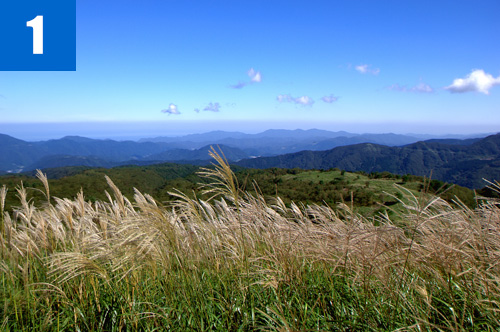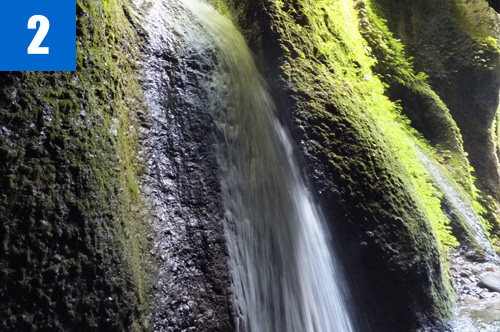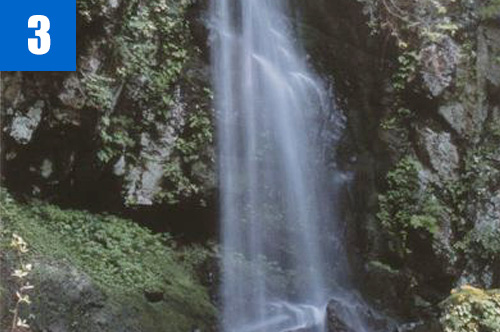This is a site composed of the plateau formed with lava flown from monogenetic volcano, Oginosen, the valley cutting through the underlying volcanic rocks, and many waterfalls. Abandunt insect fossils accumulated in a lake inside the caldera formed by volcanic activities of almost 3 million years ago were discovered in Umigami and exhibited in the Museum of unique Insect Fossil.
(1)Ueyama Highlands
A plateau at an altitude of almost 1,000m formed of lava, where alpine beech, Japanese horse chestnut, mountain ash, and Chishimazasa (Sasa kurilensis) grow thickly. The landscape of autumn fields of Japanese pampas grass and colored leaves are breathtaking. A 360-degree panoramic scenery of the Sea of Japan can be enjoyed from the summit, though depending on the weather.
(2)Shiwagara Waterfalls
A waterfall having a beautiful tunnel-like basin eroding bed rock of andesite breccia (Komata River valley is designated as memorial monument and a scenic beauty of Hyogo Prefecture).
(3)Nunotaki Waterfalls
A waterfall of almost 7m water head appearing like a white cloth, because water is falling down straight in a wide width.
(4)Umigami Umbrella Dance (August)
The dance is said to be originated from a rain prayer in the Edo Period. It was first started in Kokufu town, Tottori City. After World War Ⅱ, the young in Umigami learned the dance at Kokufu and made the current umbrella dance. The dance is performed in pairs while ringing numerous bells attached to the umbrella. (Designated as intangible cultural property in Shin'onsen Town).





